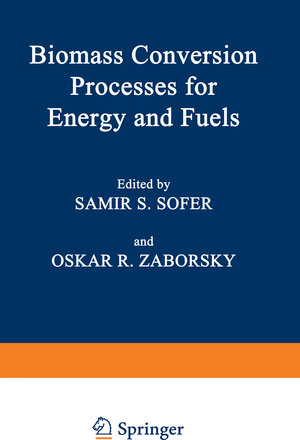
×
![Buchcover ISBN 9781475703030]()
Countless pages have been written on alternative energy sources since the fall of 1973 when our dependence on fossil petroleum resources became a grim reality. One such alternative is the use of biomass for producing energy and liquid and gaseous fuels. The term „biomass“ generally refers to renewable organic matter generated by plants through photosynthesis. Thus trees, agri cultural crops, and aquatic plants are prime sources of biomass. Furthermore, as these sources of biomass are harvested and processed into commercial prod ucts, residues and wastes are generated. These, together with municipal solid wastes, not only add to the total organic raw material base that can be utilized for energy purposes but they also need to be removed for environmental reasons. Biomass has been used since antiquity for energy and material needs. In is still one of the most sought-after energy sources in most of the fact, firewood world. Furthermore, wood was still a dominant energy source in the U. S. only a hundred years ago (equal with coal). Currently, biomass contributes about 15 2 quadrillion Btu (l quad = 10 Btu) of energy to our total energy consump tion of about 78 quad. Two quad may not seem large when compared to the contribution made by petroleum (38 quad) or natural gas (20 quad), but bio mass is nearly comparable to nuclear energy (2. 7 quad).




